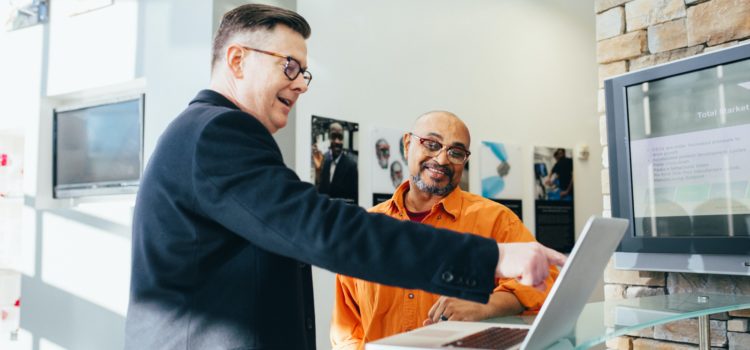

This article is an excerpt from the Shortform book guide to "12 Months to $1 Million" by Ryan Daniel Moran. Shortform has the world's best summaries and analyses of books you should be reading.
Like this article? Sign up for a free trial here.
What’s the best way to launch a new product? How can you create engaging content that’ll draw in audiences?
Your new product deserves an exciting campaign that increases sales. If don’t know the first thing about promoting your product, 12 Months to $1 Million by Ryan Moran has all the tips you need.
Continue reading for an in-depth new product launch strategy to help you get started.
Launch Your Product
Once you’ve created your first product, your next step is to launch it online and start making sales with a new product launch strategy. To ensure your product gets sales, Moran writes that you must build an audience that’s excited and interested in your product before it’s available. You can do this by creating valuable content and driving traffic to a platform where you can communicate with your audience.
(Shortform note: In Launch, Jeff Walker writes that to amass an audience that will be excited to purchase your product as soon as it launches, you must cultivate three things: value, relationships, and desire. First, give value for free, such as tips or tricks relating to your product (such as fitness tips if you’re selling workout supplements). This encourages people to reciprocate by buying your product. Next, build relationships by spacing out your launch and having sustained interactions with people in your target audience. Lastly, build desire by treating your product launch like a major event. You can do this by displaying a countdown to launch day.)
According to Moran, the engagement of your audience matters more than its size. However, he suggests you aim for 1,000 followers, 10 personal connections, and one influencer if possible (although you should still launch if you can’t meet these numbers). He explains that with this level of engagement, you can expect to make a hundred sales on your first launch day.
(Shortform note: Other experts agree with Moran that the quality of your audience is more important than quantity. In fact, Moran’s suggestion of getting 1,000 followers mirrors the advice Tim Ferriss shares in Tools of Titans that all you need for success is 1,000 true fans. True fans are people who will buy anything you create. According to Ferriss, true fans will become your main source of income and help advertise your brand to ordinary fans.)
Let’s look at Moran’s tips for growing an audience for a profitable product launch.
Plan the Logistics of Your Launch
To successfully attract an audience to your product launch, you must work out the logistics of your launch. This will allow you to effectively publicize it and then ensure that your audience can properly interact with you, your company, and your product at the right time. Moran suggests you determine when you’ll launch your product, what platforms you’ll sell it on, and how you’ll communicate with your audience.
1. Plan your launch date. Moran suggests you plan to launch a few days after you think your product will be ready. This way, you ensure that you’re fully prepared to take sales and avoid wasting your marketing efforts if something gets delayed.
(Shortform note: In addition to planning your launch date, you should also decide when to start promoting it to your audience. In The $100 Startup, Chris Guillebeau says that you should reveal the time of your launch well in advance (this can be anywhere from a few weeks to several months according to other experts) because this helps build anticipation. Guillebeau also advises you to also plan the end of your launch cycle, which is when you’ll stop giving out launch-exclusive promotions.)
2. Decide where to sell your product. Moran suggests Amazon, Kickstarter, your own store, or a combination of the three.
(Shortform note: You should also make sure you’re ready to receive sales. According to Chris Guillebeau, you can do this by notifying your bank so that they don’t freeze your account and by preparing various payment options—such as Paypal or Google Pay.)
3. Decide what platform you’ll use to interact with your audience—for example, Facebook, Instagram, or LinkedIn. Moran suggests you think about where your audience is most active and go there.
(Shortform note: In Crush It!, Gary Vaynerchuk recommends you use multiple platforms, not just the one that your target audience frequents most often. This allows you to take advantage of the strengths of each platform—for example, the visual appeal of Instagram, the personal connections of Facebook, and the professional networking of LinkedIn. However, make sure that all of them direct audience members to one place, such as your blog. )
Create Content and Engage With Your Audience
Now that you’ve prepared the logistics of your launch, it’s time to build anticipation and attract followers. You can do this by creating engaging content and interacting with people in your target audience.
(Shortform note: In Building a StoryBrand, Donald Miller recommends you include calls to action throughout your content. These are messages that encourage your audience to do something, such as subscribing to your email list or visiting your website. According to Miller, calls to action are crucial because people typically don’t act unless they’re challenged to.)
But what kind of content should you create? Moran recommends you use a format you’re comfortable with—whether that’s writing blog posts, creating videos, or hosting a podcast—and share your business’s journey with your audience—for example, let them see how your product is coming along, share your feelings about the launch, and answer common questions they may have. Creating such content spreads the word about your product launch and gets people excited about it.
(Shortform note: When sharing your business’s journey, consider oversimplifying your content. The authors of Positioning argue that simple and obvious messages are more effective because people’s brains can only hold a few ideas at once. If your message contains too much information, people will get overwhelmed and tune it out, so having clear and simple content about your business and your product will likely be more effective for engaging your audience.)
In addition to creating content, Moran suggests you interact with your audience as much as possible. Join conversations they’re having, weigh in on popular topics, and respond to every comment and message you get. Interacting with your audience helps build trust and loyalty, which are essential for building a successful brand and having a successful launch.
(Shortform note: In The Minimalist Entrepreneur, Sahil Lavingia echoes Moran’s suggestion to interact with your audience and recommends you work to become a recognized expert among them. First, lurk around to gain an understanding of the community. Once you feel more familiar with the group, join discussions and eventually start creating content and teaching information to others in the community. Lavingia suggests you let your passion show and you truly listen to what others have to say. This helps you build strong relationships with members of your target audience.)
Recruit People to Support Your Launch
In addition to building engagement yourself, Moran suggests you recruit other people to support your launch.
First, he suggests you reach out to ten people in your personal network. Ideally, they should belong to your target audience. Give them your product for free and ask them to post about your product. This is an easy way to spread awareness about your launch and cultivate a positive impression of your product.
(Shortform note: If you want to ask people you know to promote your product but aren’t sure how to go about it, consider Chris Guillebeau’s advice in The $100 Startup. Guillebeau suggests you send a message with the following components: Explains what your business is about, the main product you’re selling, and the goals you want to achieve. Then, give one to three ways they could help you and thank them for their time and support.)
Another way to get more attention for your launch is by finding an influencer to promote it. Moran suggests you connect with smaller influencers who have around 10,000 followers. They have enough influence to boost your sales and are also more likely to agree to work with you. To get an influencer to support your product launch, Moran recommends that you give them something first rather than ask them for a favor. Think of what you can offer them—one of the easiest ways is to offer money, Moran writes, but you could also share their content or send a gift. He writes that focusing on building a relationship first rather than trying to make a transaction makes people more willing to work with you.
(Shortform note: In Perennial Seller, Ryan Holiday also suggests focusing on relationships instead of transactions, and he presents some additional tactics for persuading influencers to endorse your product launch. First, he suggests you identify suitable influencers by finding people who have promoted similar products before and reaching out with the intention of improving their lives. Holiday also provides additional suggestions for value you can give to them: Consider giving free content, creating custom products for them, or making them an unofficial ambassador for your brand.)
Create Incentives for Early Buyers
As you near your launch date, ramp up the anticipation by creating incentives for people to buy your product when it launches. Moran suggests two ways of doing this:
1. Create a priority list. Make a list that gives priority access to people most eager to buy your product. To create this list, announce that you have a limited supply of your product and that you can’t guarantee there’s enough for everyone to purchase when it launches. Then, ask people to comment with a specific phrase (like “Save one for me!”) if they want one reserved for them. You can also create an exclusive communication channel with these priority customers to make them feel valued. Moran notes that priority lists create a sense of scarcity—people become more eager to buy because they don’t want to miss out on your product. Plus, by reserving products for people, you ensure you’ll have buyers on your launch date.
(Shortform note: The sense of exclusivity that a priority list creates increases social currency. According to Jonah Berger in Contagious, social currency is something that improves a person’s public image and social influence. Having an insider status gives people social currency because it makes them look good and more powerful. Berger explains that people only talk about things that give them social currency, so they’ll likely brag about being a part of your list. This will encourage other people to want to join as well.)
2. Give special bonuses. Another way to get more sales when you launch is to offer special bonuses for people who buy your product in the first few days of your launch. You could consider doing a BOGO deal or giving an extra feature or freebie. These bonuses will motivate customers to buy early to avoid missing out on the opportunity.
(Shortform note: When creating special bonuses for your launch, make sure they are amazing deals, not just mediocre ones. According to Jonah Berger, an amazing discount has four characteristics: First, it offers a big saving—such as 50% rather than 5%. This ensures more people will talk about it with others. Second, make sure the discount is limited so that it seems special. Third, use percentage discounts (like 50%) when you have a price below $100 and numerical discounts (like $10 off) when you have a price above $100 to make it seem like a better deal. Lastly, make the discount well-advertised and obvious so people share it with other people.)

———End of Preview———
Like what you just read? Read the rest of the world's best book summary and analysis of Ryan Daniel Moran's "12 Months to $1 Million" at Shortform.
Here's what you'll find in our full 12 Months to $1 Million summary:
- Why it's not only possible, but simple, to build a $1 million business in a year
- Proven techniques for creating breakthrough products
- How to decide whether to scale or sell your business






